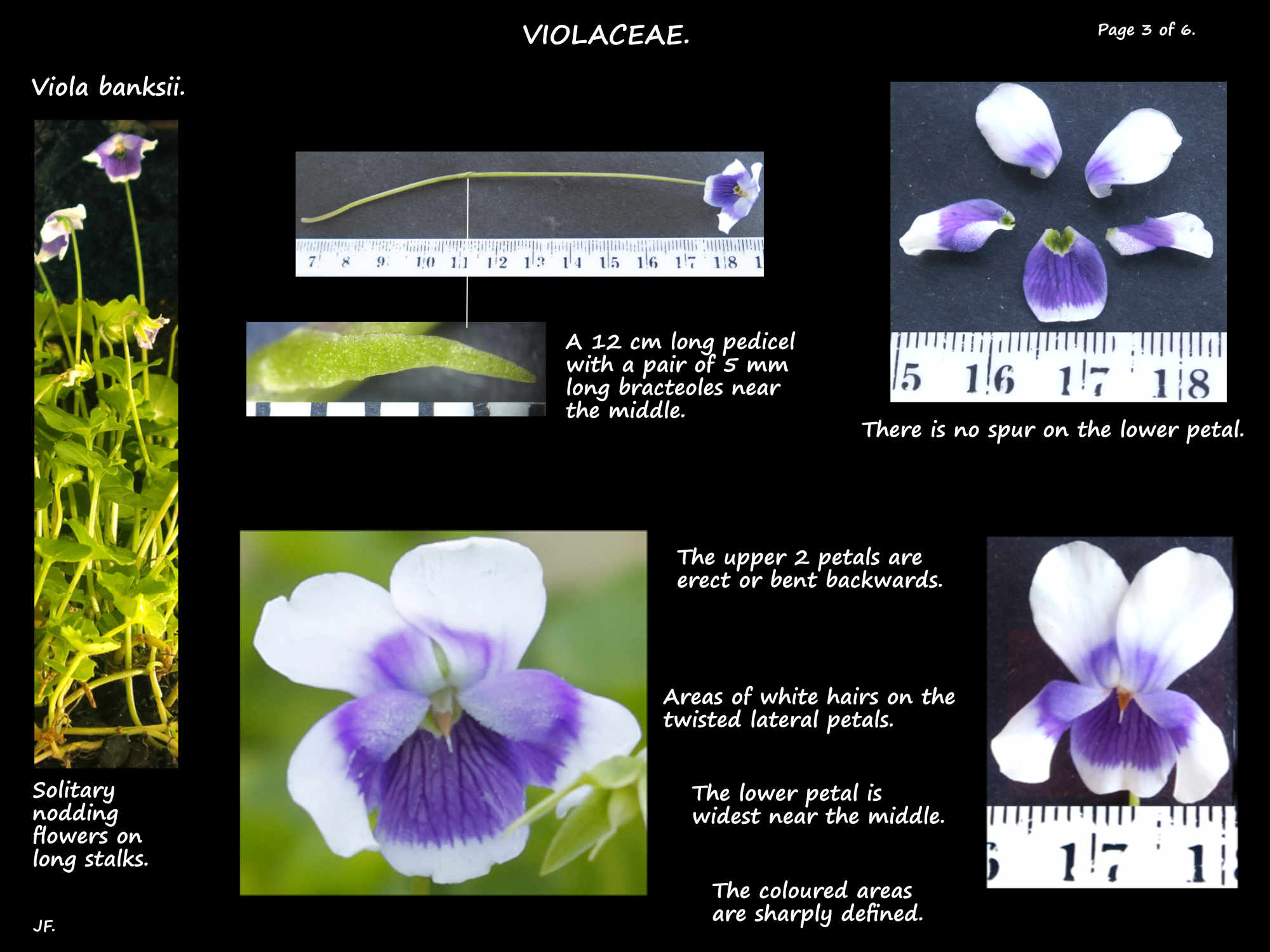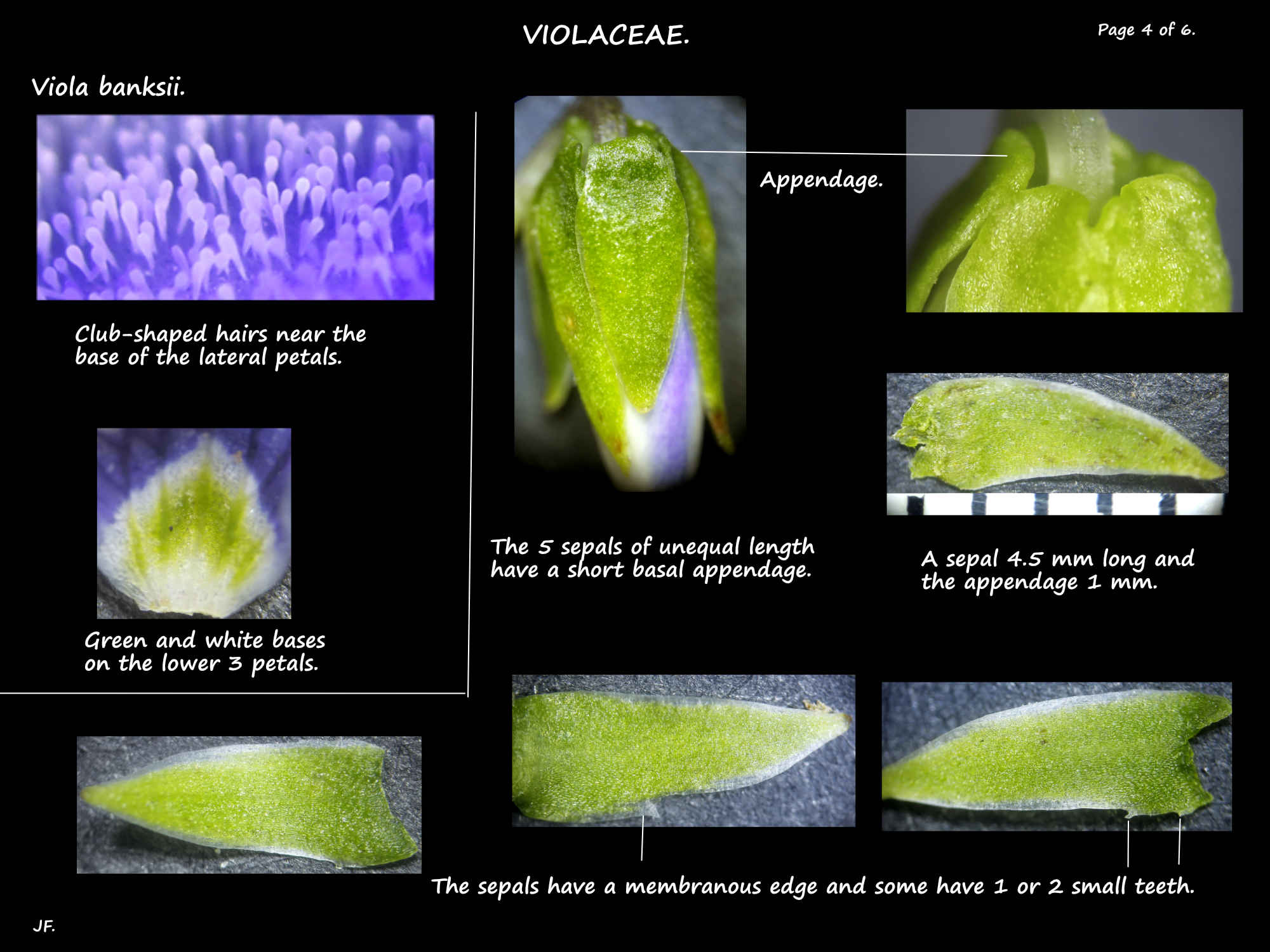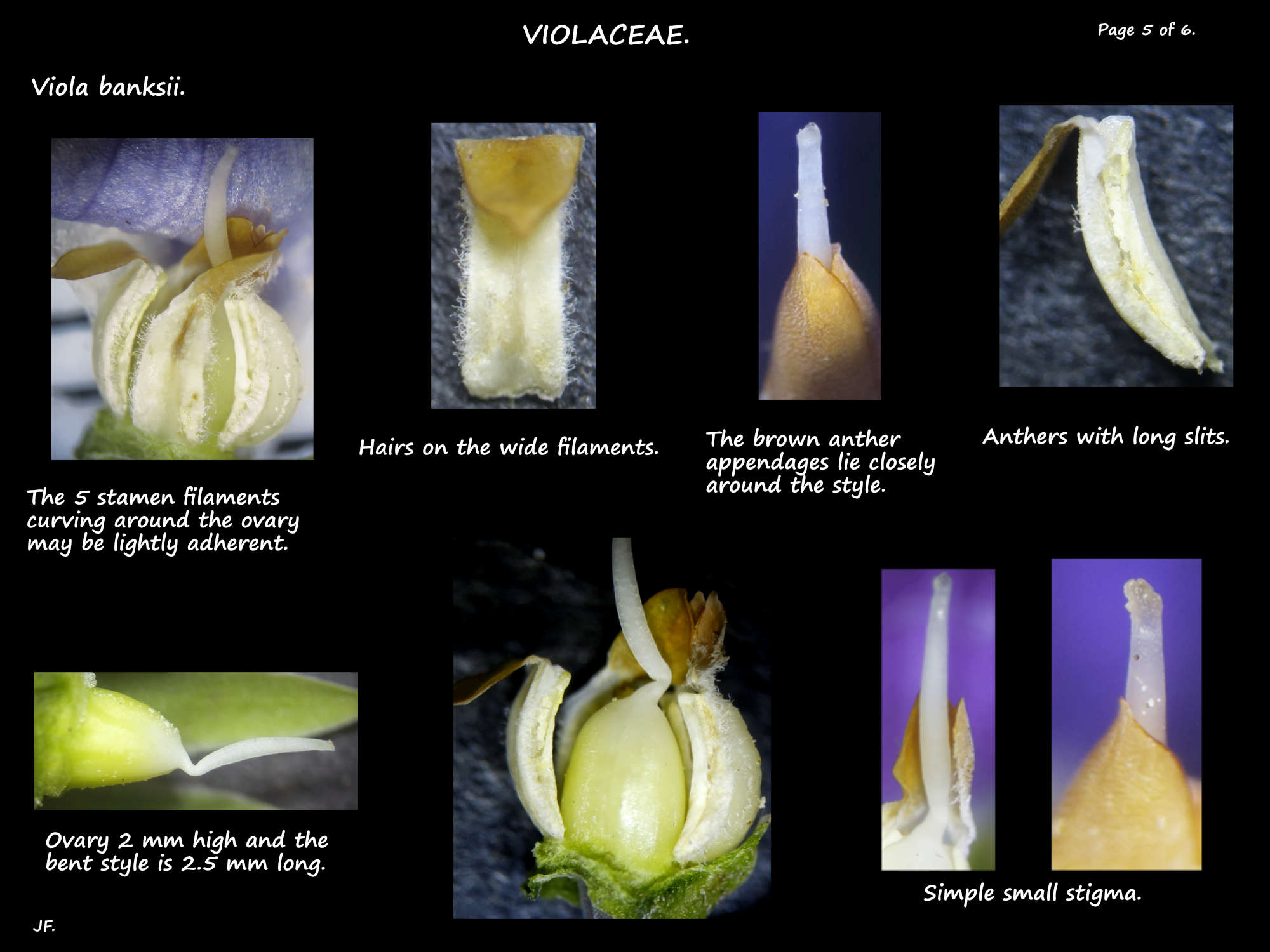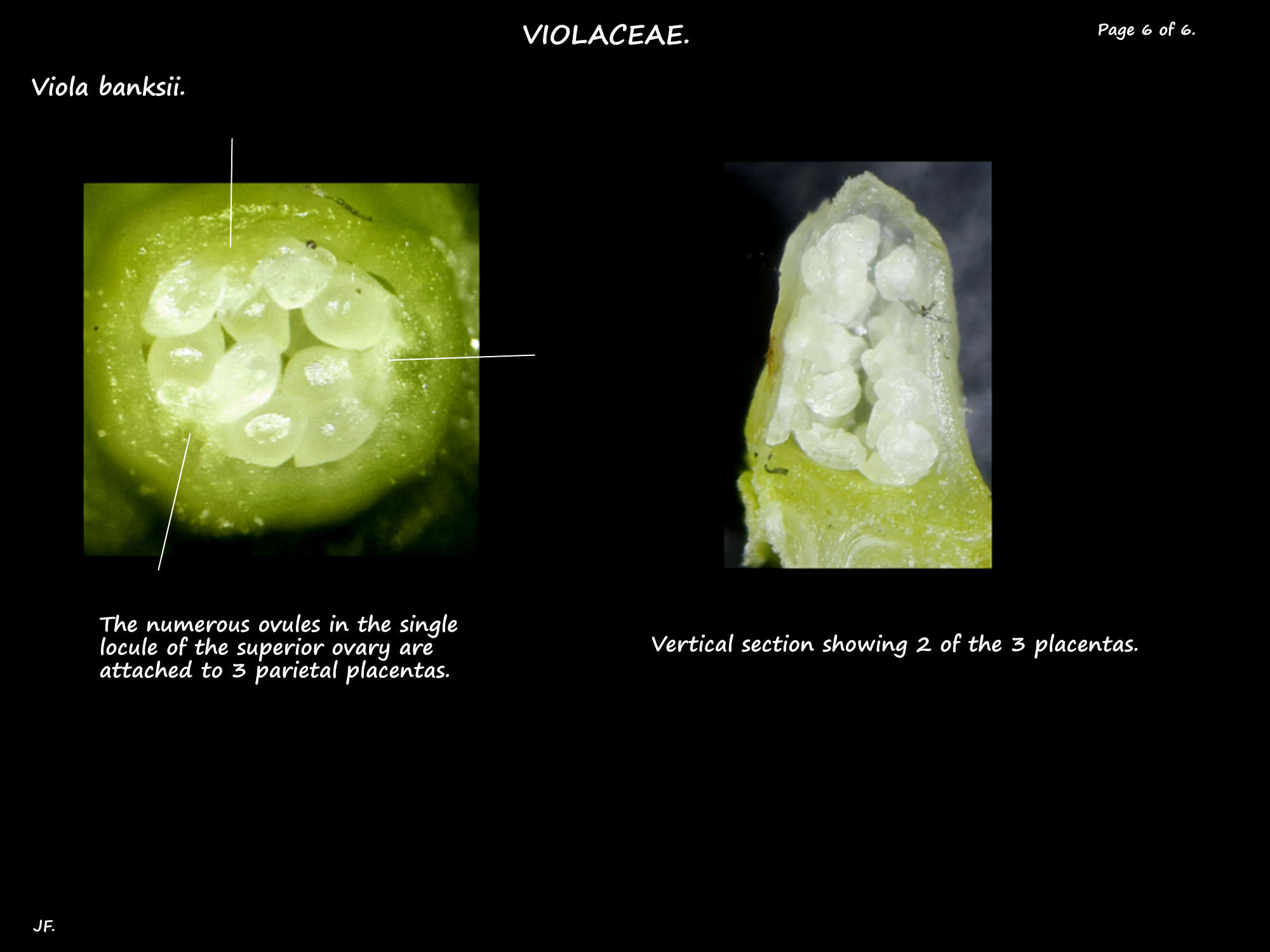Viola banksii.
The Wild or Native violet is in Family Violaceae.
Viola banksii is the species most commonly seen in gardens.
It has been, and still is, commonly confused with Viola hederacea which is the Ivy Leaf violet.
A few believe they are the same but others recognise them as separate but very similar species.
V. banskii plants are still frequently sold as V. hederacea.
In researching the two species care must be taken as to exactly which species an article refers to as
many descriptions of V. hederacea may actually be of V. banksii.
Viola banksii are prostrate perennial herbs spreading by stolons which root at the nodes.
They are up to 20 cm high and can spread up to 2 m laterally.
At each node there is a tight basal rosette of leaves on petioles up to around 12 cm long.
There are small, narrow to broadly triangular stipules with glandular teeth.
The leaf blades are up to 2.5 cm wide.
On the New South Wales Flora Online website (Australian National Botanic Gardens) the key to the species has
the final item 13a for V. banksii as ‘leaves reniform to orbicular, about as long as wide, often
with a deep, narrow sinus’.
(For V. hederacea the final item 12a is ‘Leaves usually more or less semicircular’.
Descriptions elsewhere allegedly for V. banksii say they are kidney-shaped, wide kidney-shaped,
heart-shaped, almost circular or variable).
Some leaves may have a few hairs on the paler lower surface and the edges have small teeth.
The inflorescences are an erect leafless stalk up to 15 cm long with a single nodding flower.
There is a pair of small bracteoles in the middle of the pedicel.
The upper or posterior two petals are erect or markedly curved backwards.
They are predominantly white with some purple at the base.
The lateral pair of petals are twisted and spread out and down.
The basal two thirds is purple and the rest is white.
There is a wide area of hairs near the base.
The anterior or inferior petal is the lip.
For V. banksii the NSW key has 11b ‘Anterior petal broadest in the proximal third or the middle, regularly
triplinerved, petals with distinct demarcation between violet and white colouration’.
(For V. hederacea 11a has ‘Anterior petal broadest in the distal third, its venation usually somewhat irregular,
petals with indistinct demarcation between violet and white colouration’ then 12a ‘flowers usually
discolorous, deep violet in the centre, gradually blending into white at the tips’.)
Unlike many other species there is no spur at the base of the anterior petal.
About the proximal three quarters of the petal is violet and the rest is white.
The bases of the lateral and inferior petals have a green area surrounded by white.
V. banksii flowers are a deeper colour than V. hederacea.
The stamens, ovary and style are typical of Viola species.
The wide filaments of the 5 stamens surround the ovary and the brown triangular anther appendages lie close
around the base of the style.
The lower pair do not have basal appendages.
The superior ovary, of 3 fused carpels has one locule with 3 parietal placentas.
The style is bent near the base and is not thickened near the top.
There is a single, simple stigma.
The fruit are capsules that open into 3 valves with 2 to 2.5 mm long seeds.
According to the NSW key:
V. banksii seeds are a ‘glossy purplish-black’.
(V. hederacea are ‘dull, cream to brown, usually mottled’.)
J.F







